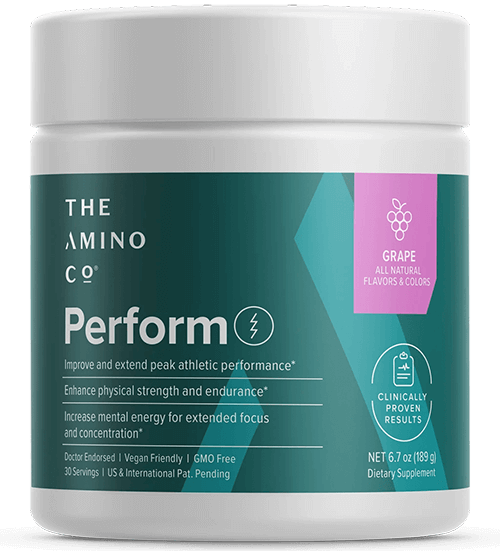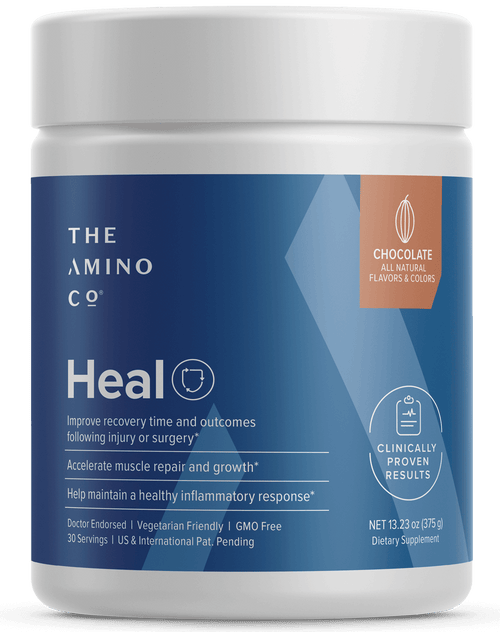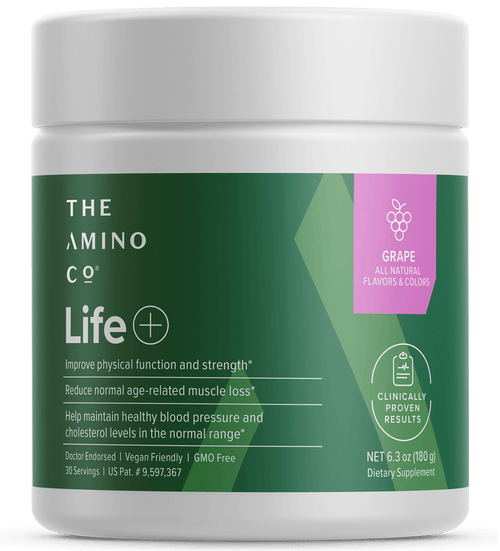Breaking Down the Organic Acid Test, Step by Step
 By: by Amino Science
By: by Amino Science

The Organic Acid Test (OAT) measures a range of metabolic markers—over 70 in total—to provide insight into a person's health. By providing an accurate evaluation of intestinal yeast and bacteria, fungus, mold, oxalates, metabolites, neurotransmitters, vitamins, minerals, and antioxidants, the test offers insight into your body's energy production and detoxification capacity.
In recent years, the test has gained quite a following among experts in the functional medicine world. It's a simple, noninvasive urine test that can yield a wealth of valuable information for individuals with chronic illnesses, neurological conditions, and other health concerns. The OAT can also be useful for those who simply wish to gain a better understanding of their overall health and identify nutrient deficiencies as well as genetic factors that may need to be strategically addressed. The OAT can provide cellular-level wisdom about the underlying causes of frustrations like low energy levels, recurrent abdominal pain, and more.
Before explaining how organic acid testing works in more detail, however, let's take a moment to go over some basics about organic acids themselves.
Quick Facts About Organic Acids
Organic acids, in short, are organic, acidic chemical byproducts of the body's metabolic processes that get excreted in the urine. Many organic acids are generated by the bacteria and other microorganisms that populate the digestive tract.
The chemical makeup of organic acids always includes carbon and hydrogen molecules, and sometimes contains oxygen, phosphorus, nitrogen, and sulfur molecules too.
The names of the organic acids can be used as clues to their composition. Most of their names use the suffix "ic"—for example, lactic acid. The letters before the suffix indicate its conjugate base—each organic acid has one or more—which ends with the suffix "ate." So, going back to our example, you can deduce that the conjugate base of lactic acid is lactate. While this all sounds, and is, highly technical, it's helpful to know, as it's common to see the name of the organic acid—lactic acid—and the name of its conjugate base—lactate—used interchangeably.
What Does the Organic Acid Test Measure?
As touched on in the introduction, the organic acid test measures levels of over 70 biomarkers that provide information about the state of a multitude of metabolic pathways throughout the body. Abnormal organic acid levels indicate the presence of metabolic dysfunction arising from underlying causes such as:
- Nutritional deficiencies
- Exposure to toxins
- Neuroendocrine malfunction
- Enzyme deficits
- Overgrowth of intestinal bacteria
Scientists use either gas or liquid chromatography in combination with mass spectrometry to measure organic acid levels. In most cases, they look at levels in a urine sample, as organic acids tend to be far more concentrated in urine than in other bodily fluids—they can be found at 100 times the concentrations seen in blood, for instance. More than 1,000 organic acids can be detected in a single urine sample.
When organic acid levels fall below the optimal range, the body's ability to carry out essential functions becomes compromised. And when they rise too high, that can be harmful too—it may, for example, lead to metabolic acidosis.
The OAT can not only detect organic acid abnormalities and their underlying causes, but it can also help you determine the best course of treatment, which might involve some or all of the following elements:
- Dietary changes
- Targeted supplementation
- Detoxification practices
Should You Take the Organic Acid Test?
Historically, the organic acid test was performed primarily in hospital settings as a means of assessing genetic metabolic defects in children. However, as new markers have been introduced, its applications have expanded. The test can now reveal health issues stemming from non-genetic factors, meaning more individuals can benefit from the information it provides.
Studies have shown correlations between abnormal organic acid levels and chronic conditions including fatigue and kidney disease as well as neurological disorders like autism. Based on the findings of the OAT, dietary interventions and targeted supplementation can be used to bring about significant clinical improvements.
The OAT can also be a relatively inexpensive way for individuals to try to suss out the root cause of health issues. It can give a more in-depth perspective than conventional bloodwork offers. Individuals dealing with sleep disturbances, mood disorders, skin issues, gastrointestinal problems and more can all garner helpful information from the OAT.

Breaking Down the 12 Sections of the Organic Acid Test
The organic acid test evaluates biomarkers relevant to a range of health issues. The test itself is divided into 12 sections:
- Intestinal microbial overgrowth
- Oxalate metabolism
- Glycolytic cell metabolism
- Krebs cell metabolites
- Amino acid metabolites
- Neurotransmitter metabolities
- Pyrimidine metabolites
- Ketone and fatty acid metabolites
- Nutritional markers
- Indicators of detoxification
- Mineral metabolism
- Fluid intake and hydration levels
Now, we'll go section by section, discuss what exactly is being measured and how those measurements shed light on your overall health and wellness.
1. Intestinal Microbial Overgrowth
The first section of the OAT looks at markers indicating the presence of yeast and fungi, such as:
- Candida
- Mold
- Clostridia
If multiple markers are elevated, that's quite concerning. Overgrowths of fungi and yeast can interrupt immune function and digestion. They can also create imbalances in the production of stress hormones.
Elevated markers in this section often correlate to conditions such as:
- Fibromyalgia
- Migraines
- Chronic fatigue syndrome
- Depression
- Bipolar disorder
- Autism
- Schizophrenia
- Seizure disorders
- ADHD
- Food sensitivities
- Nutrient malabsorption
- Irritable bowel syndrome
- Crohn's disease
- Ulcerative colitis
- Kidney and liver dysfunction
2. Oxalate Metabolites
High levels of oxalates, one of the most acidic of the organic acids, can be quite damaging. The structure of oxalate crystals involves sharp edges that can damage the tissues of the body, resulting in pain, inflammation, and oxidative stress.
The location where oxalate crystals form determines the symptoms associated with the presence. Some locations they can develop include:
- Joints
- Organs
- Blood vessels
- Muscles
- Glands
Elevated oxalate levels can be a factor in chronic joint pain, kidney stones, and other health problems.
Often, high oxalic acid levels result from deficiencies in vitamin B6 as well as heavy consumption of foods rich in oxalates. Many of those foods are quite nutritious, such as:
- Spinach
- Beets
- Wheat bran
- Berries
- Almonds
Correcting elevated oxalic acid levels will likely involve both increasing vitamin B6 intake as well as decreasing intake of foods high in oxalates.
3. Glycolytic Cycle Metabolites
During a process called the glycolytic cycle, or glycolysis, the body generates lactic and pyruvic acid from glucose (sugar) in order to give us energy.
Elevated levels of lactic or pyruvic acid indicate that a person's metabolism has become overly reliant on sugar and is underutilizing fat. This results from mitochondrial dysfunction, which may stem from exposure to environmental toxins such as mold.
Other potential causes of high levels of glycolytic cycle metabolites include:
- Intense exercise
- Shock
- Bacterial overgrowth
- Anemia
- Oxidative stress
4. Krebs Cycle Metabolites
The Krebs, or citric acid, cycle is comprised of a series of chemical reactions in the mitochondria. Similar to glycolysis, this process produces energy. Elevated levels or unnaturally low levels of Krebs cycle metabolites also indicate mitochondrial dysfunction, often stemming from deficiencies in various nutrients and enzymes that are vital to the health of your mitochondria.
For instance, abnormally high low levels of sunnic can be a sign of a vitamin B2 or coenzyme Q10 (CoQ10) deficiency, while extremely low levels of sunnic point to possible deficiencies of two branched-chain amino acids, leucine and isoleucine.
5. Amino Acid Metabolites
This section of the OAT measures levels of three amino acid metabolites: 3-Methylglutaric acid, 3-Hydroxyglutaric acid, and 3-Methylglutaconic acid.
When these measurements are high, that's a sign of both impaired mitochondrial function as well as poor metabolism and absorption of amino acids. Typically, those imbalances will produce gut inflammation.
If amino acid metabolite levels are high, but glycolytic and Krebs cycle metabolites are normal, that indicates metabolic difficulties specifically with the breakdown of protein and the absorption of the amino acids it contains.
6. Neurotransmitter Metabolites
This section of the test has the greatest relevance for individuals dealing with insomnia, ADHD, autism, and mood disorders such as anxiety and depression. It measures levels of metabolites for phenylalanine and tyrosine—HVA and VMA—as well three metabolites for tryptophan—5-HIAA, quinolinic acid, and kynurenic acid.
High levels of stress can have a seriously adverse effect on phenylalanine and tyrosine metabolites, as does exposure to lead. Additional factors related to abnormal levels of these metabolites include:
- Vitamin C deficiency
- Low copper levels
- Bacterial overgrowth
Abnormal levels of tryptophan metabolites can be a sign of issues such as:
- Serotonin deficiency
- Neurological inflammation
- Microbial infection
- Degeneration of the central nervous system
- Inappropriate tryptophan supplementation
- Exposure to phthalates
- Vitamin B6 deficiencies
- Overactive immune system
- High cortisol levels
7. Pyrimidine Metabolites
Levels of pyrimidine metabolites (uracil and thymine) reflect how well the body is metabolizing folate.
A body deficient in folate (vitamin B9) has high uracil levels. Other causes of high uracil levels include mutations to the MTHFR homozygous gene and issues with methylation.
Individuals on extremely high-carbohydrate diets, as well as alcoholics, can become deficient in vitamin B1, leading to high levels of thymine, a physiological state linked to inflammatory diseases and cancer.
8. Ketone and Fatty Acid Metabolites
The eight ketone and fatty acid metabolites measured by this section of the OAT provide valuable information about fat metabolism.
Individuals on low-carbohydrate diets, such as the ketogenic diet, will have elevated levels of these markers as an innate feature of that eating approach. In individuals not adhering to such a dietary protocol, elevated levels indicate impaired absorption of fats.
Often, the underlying cause of such an issue is gut inflammation. It can also indicate widespread oxidative stress.
9. Nutritional Markers
This can be one of the most important sections of the OAT, as it can pinpoint nutritional deficiencies that may cause both physical and mental health conditions. It does this by measuring the byproducts generated when nutritional deficiencies set in.
For instance, elevated levels of methylmalonic acid correlate to a vitamin B12 deficiency, which might be caused by pernicious anemia, small intestinal bacterial overgrowth (SIBO), or simply malabsorption.
Some of the nutritional deficiencies that can be flagged by this section include:
- Vitamin B12
- Other B vitamins
- Vitamin C
- CoQ10
- N-Acetylcysteine
- Biotin (vitamin H)
10. Indicators of Detoxification
This section yields crucial information about your body's capacity for detoxification. One way it does this is by measuring levels of an essential antioxidant called glutathione. It's common for chronic health issues to deplete the body's glutathione supply.
High levels of pyroglutamic acid, a metabolite of glutathione, indicate that the body has an insufficient supply, typically due to overuse. Underlying causes such as infections and exposure to environmental toxins can demand more glutathione than the body can generate.
High levels of orotic acid, another significant marker of detoxification, indicate the presence of excess ammonia in the body. Ammonia toxicity has a pronounced effect on brain tissue, producing symptoms like:
- Anxiety
- Headaches
- Difficulty concentrating
While genetic issues account for some instances of poor ammonia metabolism, it can also be caused by viral infections, poor liver or kidney function, and gut dysbiosis and other gastrointestinal issues.
11. Mineral Metabolism
This section measures levels of phosphoric acid, which provides a view of the body's supply of vitamin D and calcium—vital for the growth and maintenance of your bones.
Low levels of phosphoric acid point to a deficiency, which might stem from:
- Poor phosphate intake
- Impaired production of digestive juices
- Deficiency of vitamin K2
- Deficiency of magnesium
High levels of phosphoric acid might mean that a person has been exposed to toxic levels of lead, or that they're getting too many phosphates in their diet (often from high consumption of processed foods). It can also result from inappropriate vitamin D supplementation.
12. Creatine Levels
The final section of the OAT measures creatine, which shows how dilute a person's urine is. This, in turn, provides information about fluid intake and hydration.
High levels of creatine tend to result from dehydration, but may also be caused by excessive exercise, inappropriate creatine supplementation, or a urinary tract infection. If creatine levels exceed 300, kidney problems are indicated.

How to Perform an Organic Acids Test
It's now possible to perform an OAT test at home using mail-order kits that come with comprehensive instructions and all the necessary materials. Most ask that you collect urine immediately after waking and prior to the consumption of any food or beverages.
It's also important to follow instructions relating to foods that contain compounds with the potential to produce false positives for certain biomarkers. Typically, you would need to avoid eating these foods 2 days prior to the collection of your urine sample.
Some foods known to cause problems include:
- Apples
- Cranberries
- Grapes and raisins
- Pears
You may also need to refrain from taking certain supplements, including echinacea and reishi mushrooms, for at least 12 hours leading up to urine sample collection.
Conclusion
By measuring levels of over 70 metabolites, the organic acid test allows individuals to better understand their overall health. The test looks at metabolites related to:
- Detoxification
- Fatty acid metabolism
- Oxalate levels
- Mitochondrial function
- Neurotransmitter levels
- Vitamin and antioxidant levels
- Yeast and bacterial overgrowth
The test can help individuals identify the underlying causes of frustrating health issues, thereby forming the foundation for the creation of a highly individualized treatment plan.

Up to 25% off Amino
Shop NowTAGS: anti-aging conditions
Join the Community
Comments (0)
Most Craveable Recipes




 833-264-6620
833-264-6620



















